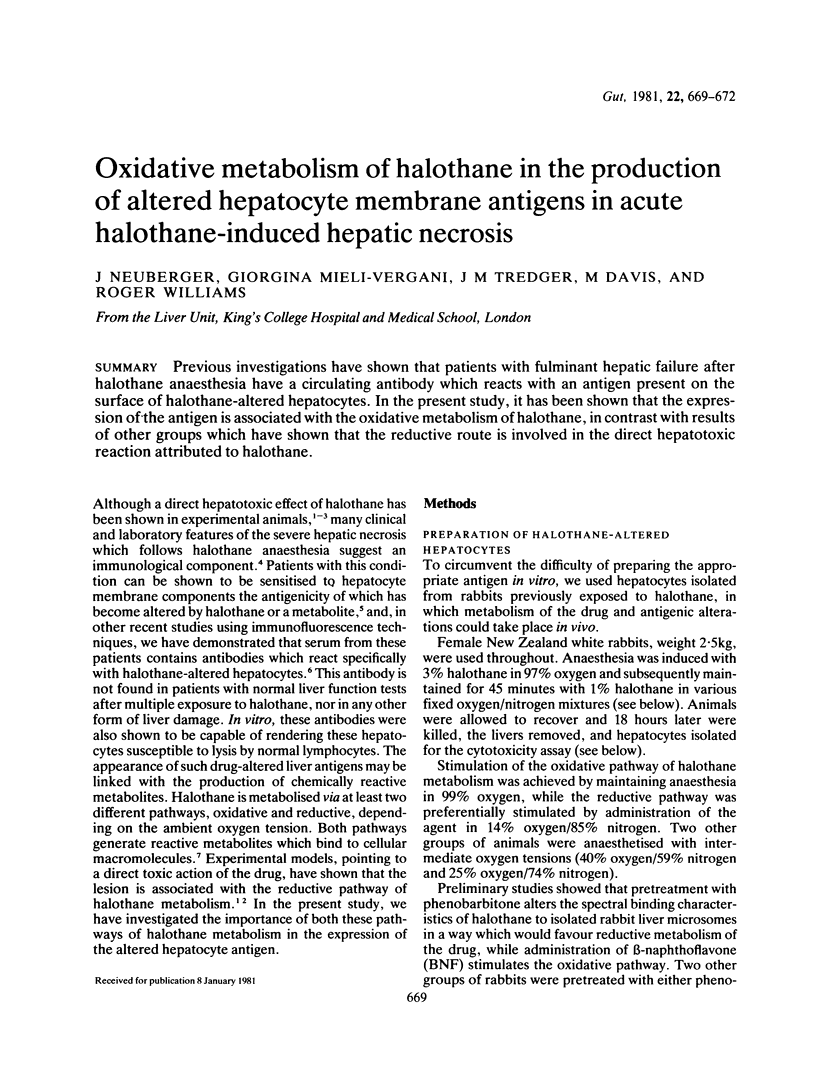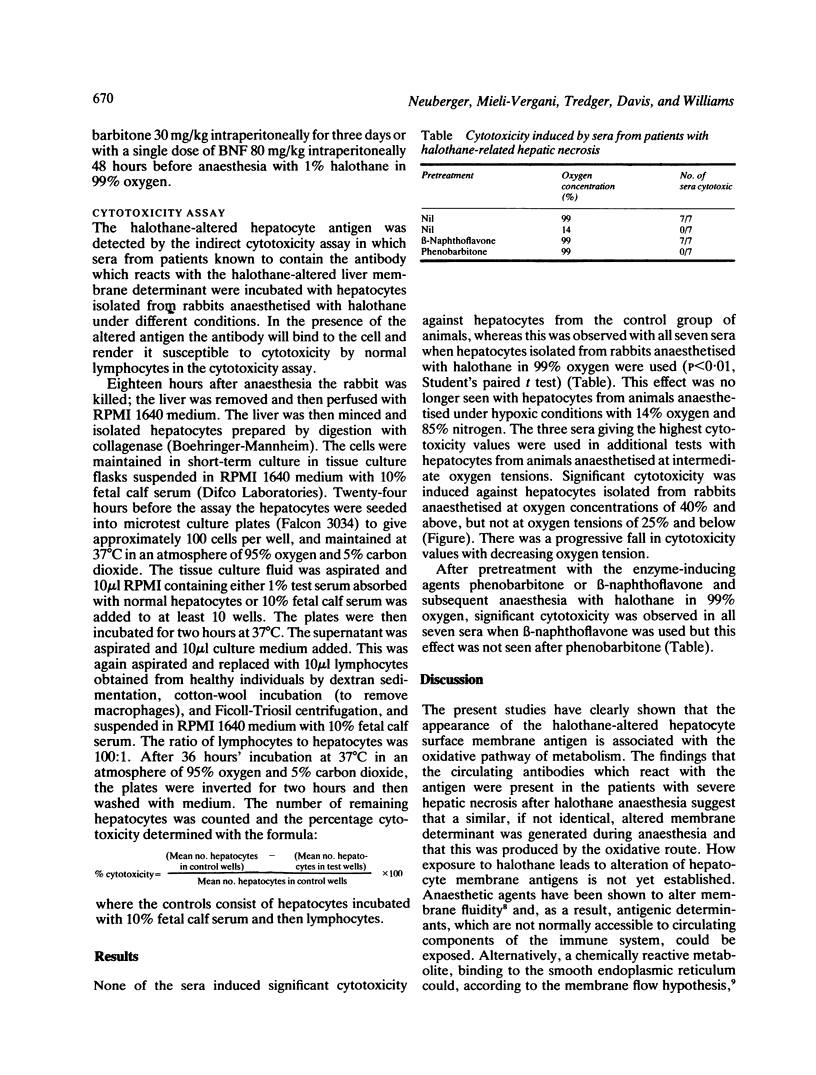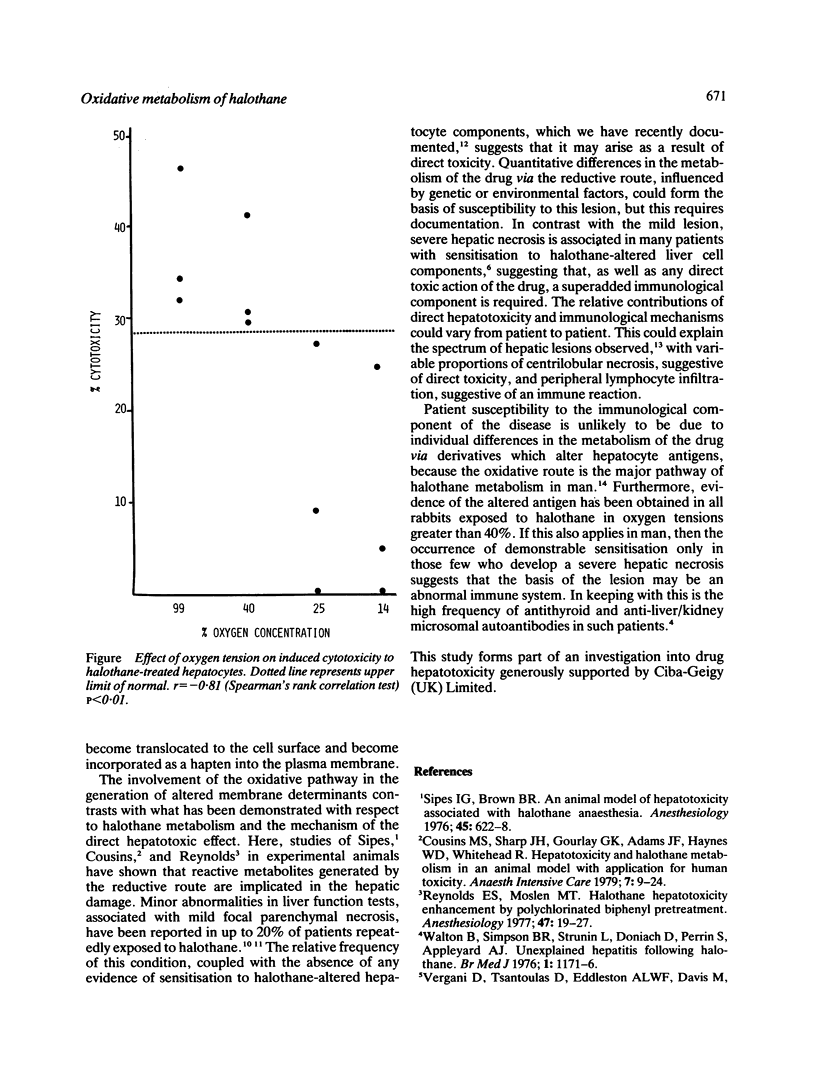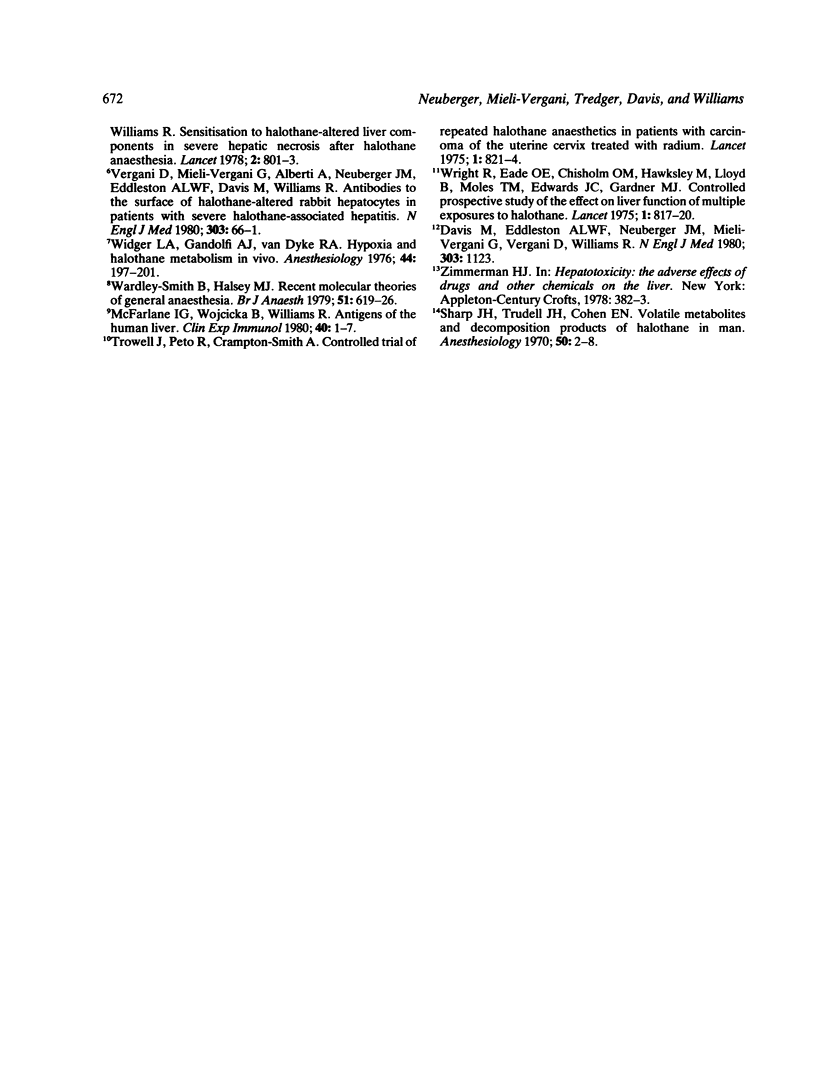Abstract
Previous investigations have shown that patients with fulminant hepatic failure after halothane anaesthesia have a circulating antibody which reacts with an antigen present on the surface of halothane-altered hepatocytes. In the present study, it has been shown that the expression of the antigen is associated with the oxidative metabolism of halothane, in contrast with results of other groups which have shown that the reductive route is involved in the direct hepatotoxic reaction attributed to halothane.
Full text
PDF



Selected References
These references are in PubMed. This may not be the complete list of references from this article.
- Cousins M. J., Sharp J. H., Gourlay G. K., Adams J. F., Haynes W. D., Whitehead R. Hepatotoxicity and halothane metabolism in an animal model with application for human toxicity. Anaesth Intensive Care. 1979 Feb;7(1):9–24. doi: 10.1177/0310057X7900700102. [DOI] [PubMed] [Google Scholar]
- Davis M., Eddleston A. L., Neuberger J. M., Vergani D., Mieli-Vergani G., Williams R. Halothane hepatitis. N Engl J Med. 1980 Nov 6;303(19):1123–1124. doi: 10.1056/NEJM198011063031917. [DOI] [PubMed] [Google Scholar]
- McFarlane I. G., Wojcicka B. M., Williams R. Antigens of the human liver. Clin Exp Immunol. 1980 Apr;40(1):1–7. [PMC free article] [PubMed] [Google Scholar]
- Reynolds E. S., Moslen M. T. Halothane hepatotoxicity: enhancement by polychlorinated biphenyl pretreatment. Anesthesiology. 1977 Jul;47(1):19–27. [PubMed] [Google Scholar]
- Sipes I. G., Brown B. R., Jr An animal model of hepatotoxicity associated with halothane anesthesia. Anesthesiology. 1976 Dec;45(6):622–628. doi: 10.1097/00000542-197612000-00005. [DOI] [PubMed] [Google Scholar]
- Trowell J., Peto R., Smith A. C. Controlled trial of repeated halothane anaesthetics in patients with carcinoma of the uterine cervix treated with radium. Lancet. 1975 Apr 12;1(7911):821–824. [PubMed] [Google Scholar]
- Vergani D., Mieli-Vergani G., Alberti A., Neuberger J., Eddleston A. L., Davis M., Williams R. Antibodies to the surface of halothane-altered rabbit hepatocytes in patients with severe halothane-associated hepatitis. N Engl J Med. 1980 Jul 10;303(2):66–71. doi: 10.1056/NEJM198007103030202. [DOI] [PubMed] [Google Scholar]
- Vergani D., Tsantoulas D., Eddleston A. L., Davis M., Williams R. Sensitisation to halothane-altered liver components in severe hepatic necrosis after halothane anaesthesia. Lancet. 1978 Oct 14;2(8094):801–803. doi: 10.1016/s0140-6736(78)92585-0. [DOI] [PubMed] [Google Scholar]
- Walton B., Simpson B. R., Strunin L., Doniach D., Perrin J., Appleyard A. J. Unexplained hepatitis following halothane. Br Med J. 1976 May 15;1(6019):1171–1176. doi: 10.1136/bmj.1.6019.1171. [DOI] [PMC free article] [PubMed] [Google Scholar]
- Wardley-Smith B., Halsey M. J. Recent molecular theories of general anaesthesia. Br J Anaesth. 1979 Jul;51(7):619–626. doi: 10.1093/bja/51.7.619. [DOI] [PubMed] [Google Scholar]
- Widger L. A., Gandolfi A. J., Van Dyke R. A. Hypoxia and halothane metabolism in vivo: release of inorganic fluoride and halothane metabolite binding to cellular constituents. Anesthesiology. 1976 Mar;44(3):197–201. doi: 10.1097/00000542-197603000-00004. [DOI] [PubMed] [Google Scholar]
- Wright R., Eade O. E., Chisholm M., Hawksley M., Lloyd B., Moles T. M., Edwards J. C., GArdner M. J. Controlled prospective study of the effect on liver function of multiple exposures to halothane. Lancet. 1975 Apr 12;1(7911):817–820. doi: 10.1016/s0140-6736(75)93000-7. [DOI] [PubMed] [Google Scholar]


